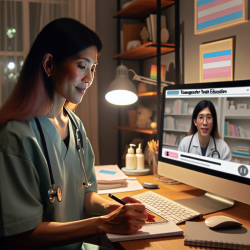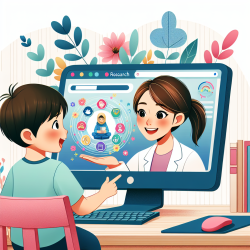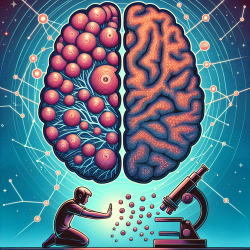Introduction
In the realm of healthcare education, particularly concerning transgender and gender-diverse (TGD) youth, the need for informed and sensitive practitioners is paramount. A recent study titled Collaborating with transgender youth to educate healthcare trainees and professionals: randomized controlled trial of a didactic enhanced by brief videos has shed light on innovative methods to enhance practitioner skills. This blog delves into the study's findings and explores how practitioners can implement these insights to improve their interactions and care for TGD youth.
The Power of Video in Education
The study employed a randomized controlled trial (RCT) to assess the effectiveness of didactic materials enhanced with video clips featuring TGD adolescents. Participants were divided into groups with varying levels of video integration, and their knowledge and attitudes were measured using the Transgender Knowledge, Attitudes, and Beliefs Scale (T-KAB).
Results indicated that participants exposed to video-enhanced presentations demonstrated significant improvements in TGD acceptance and knowledge, with effects persisting even after 30 days. This underscores the potential of video as a powerful tool in education, providing a more immersive and empathetic understanding of TGD youth experiences.
Implementing Video-Based Learning
For practitioners, integrating video-based learning into training programs can be transformative. Here are some practical steps to implement these findings:
- Incorporate Authentic Voices: Use video clips featuring TGD individuals sharing their experiences. This approach humanizes the learning process and fosters empathy.
- Regular Updates: Keep educational materials current by including recent developments in TGD healthcare practices and policies.
- Interactive Sessions: Combine video content with interactive discussions or Q&A sessions to reinforce learning and address any misconceptions.
- Continuous Learning: Encourage ongoing education through follow-up sessions or refresher courses to maintain and deepen understanding.
Encouraging Further Research
While the study provides valuable insights, it also highlights areas for further research. Practitioners and educators are encouraged to explore:
- Long-Term Impact: Investigate the long-term effects of video-based education on practitioner behavior and patient outcomes.
- Diverse Narratives: Include a broader range of TGD voices, particularly those from intersectional backgrounds, to enrich educational content.
- Technology Integration: Explore the use of emerging technologies, such as virtual reality, to create even more engaging learning experiences.
Conclusion
As practitioners, embracing innovative educational methods can significantly enhance our ability to support TGD youth. By integrating video-based learning and continuously seeking to expand our knowledge, we can create more inclusive and effective healthcare environments. For those interested in delving deeper into the study, the original research paper can be accessed through this link: Collaborating with transgender youth to educate healthcare trainees and professionals: randomized controlled trial of a didactic enhanced by brief videos.










